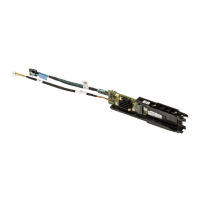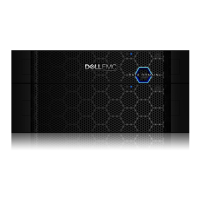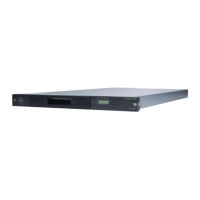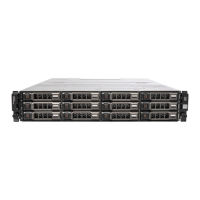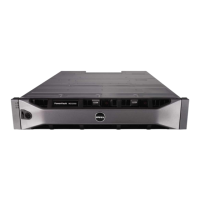Figure 14. Installing the memory module
1. memory module 2. alignment key
3. memory-module socket ejector (2)
When the memory module is properly seated in the socket, the levers on the memory module socket
align with the levers on the other sockets that have memory modules installed.
5. Repeat steps 4 and 5 of this procedure to install the remaining memory modules.
Next steps
1. Install the cooling shroud.
2. Complete the tasks listed in the After working inside your system section in this document.
3. Press F2 to enter System Setup, and check the System Memory setting.
The system should have already changed the value to reflect the installed memory.
4. If the value is incorrect, one or more of the memory modules may not be installed properly. Repeat
step 4 through step 7 of this procedure, checking to ensure that the memory modules are firmly
seated in their sockets.
5. Run the system memory test in the system diagnostics.
Hard disk drives
Your system supports Enterprise-class hard drives, which are designed for 24x7 operating environment.
Selecting the correct drive class will optimize quality, functionality, performance, and reliability of the
hard drives.
Because of industry advances, in some cases, the larger capacity drives have been changed to a larger
sector size. The larger sector size can have impacts on OSs and applications. For more information about
these HDDs, see the 512e and 4Kn Disk Formats whitepaper and 4K Sector HDD FAQ document at
dell.com/poweredgemanuals.
56
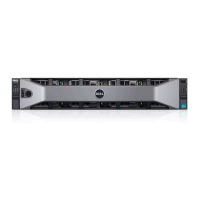
